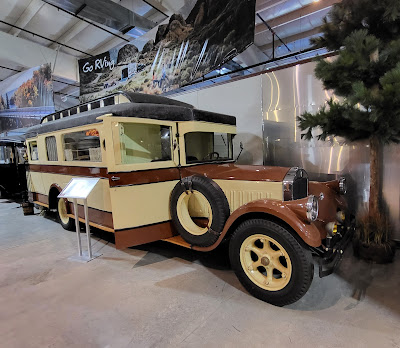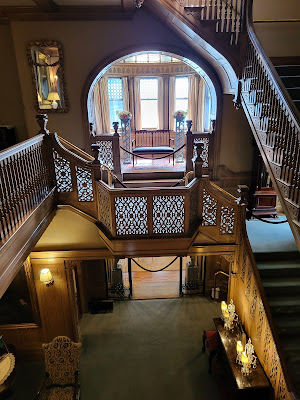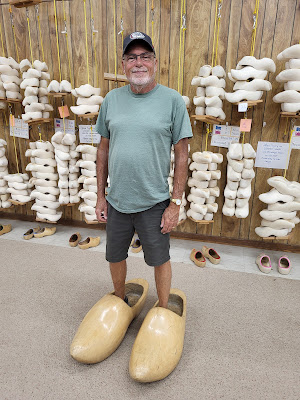We arrived at Shipshewana Campground Southpark on Monday, September 9th for a 13 day stay.
Site #21
Two days after our arrival we took a five-day side trip in our Ranger to see family in Baltimore.
Shipshewana is a small Amish town of about 700. Horses, buggies, and lots of other non-motorized vehicles are everywhere.
And of course, the famous Amish restaurants are delicious.
RV HALL OF FAME MUSEUM
Elkhart, Indiana, is the RV capitol of the world. We spent some time at the RV Museum and Hall of Fame. It was interesting to see RVs as old as 1913 as well as current RV concept vehicles.
There is over 100,000 square feet of display floor. Walking through the door of this modern museum, you begin at the oldest and progress through the evolution to the present.
The 1913 "Earl" Travel Trailer is the oldest RV in the world. It was custom made by a Los Angelos carriage maker.
1928 Pierce Arrow Fleet Housecar.
1984 Blue Bird Wanderlodge
This motorhome was built in 1988 using a 1976 Cadillac Eldorado Chassis and a 1976 Olds Toronado 455 cubic inch engine. It was designed and built to fit in a standard residential garage door.
Most of the units were open to see all the old paneling and fixtures.
STUDEBAKER NATIONAL MUSEUM
The Studebaker Museum is in South Bend, Indiana, and is adjacent to the South Bend History Museum. We bought a combo pass to visit both of them.
This beautiful 1950 Champion Coupe marks the entrance to the Studebaker Museum.
The Studebaker family began as carriage builders. This 1857 Studebaker Phaeton is the oldest surviving Studebaker vehicle.
On April 14, 1865, President and Mrs. Lincoln took this Studebaker carriage to Ford's Theater to watch their final play.
This odd-looking vehicle is called "Peg", the 1909 Backward-Forward Car. This electric car was used to ferry congressmen between the senate offices and the Capitol via a tunnel. There was no room to turn a vehicle around, so "Peg" was manufactured by Studebaker to be bidirectional.
Studebaker built electric vehicles between 1902 and 1912. This 1911 Electric Coupe was priced at $1850 with a top speed of 21 miles per hour. The battery weighed 970 pounds and required recharging every 70 miles.
Studebaker started making gasoline powered vehicles in 1904. This 1904 Studebaker Model C is the oldest surviving gasoline powered Studebaker. Its original cost was $1600.
1917 Army Ambulance
Studebaker manufactured war materials in both World Wars as well as the Civil War.
OLIVER MANSION
On January 1, 1897, 19th century industrialist J.D. Oliver, his wife, Anna, and their four children moved into their new house at 808 West Washington Street in South Bend. The family called their home Copshaholm, after the ancient name of the Scottish village where J.D.’s father, James, was born.
The Studebaker and History Museums were built on the estate property of J.D. Oliver's 38-room mansion. The Olivers made their fortune in the agricultural business. J.D. Oliver was president of the Oliver Chilled Plow Works, located in South Bend, Indiana. The company was founded by J.D.’s father, James, inventor of the chilled plow.
The Copshaholm Carriage House
The Dining Room is one of the more formal rooms in the Oliver Mansion.
Parlor
We toured all three floors of this elegant home.

































































